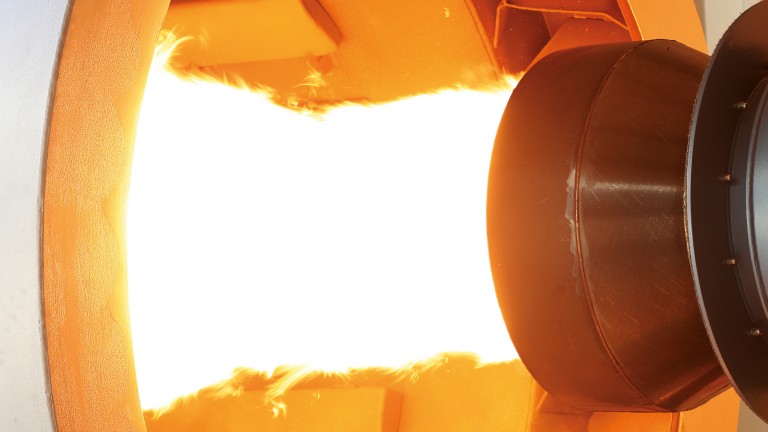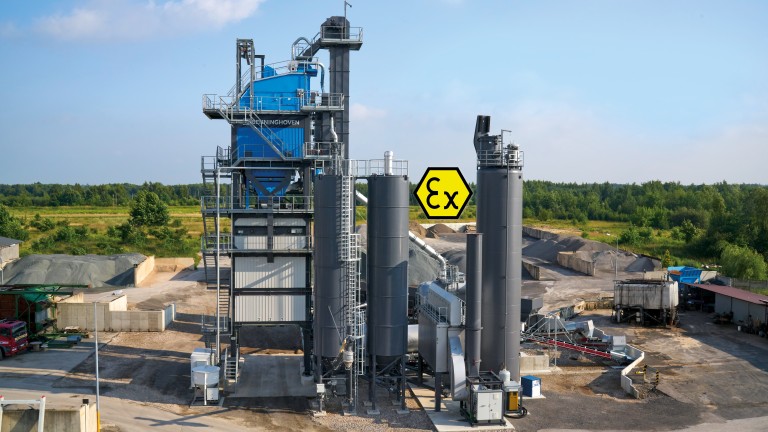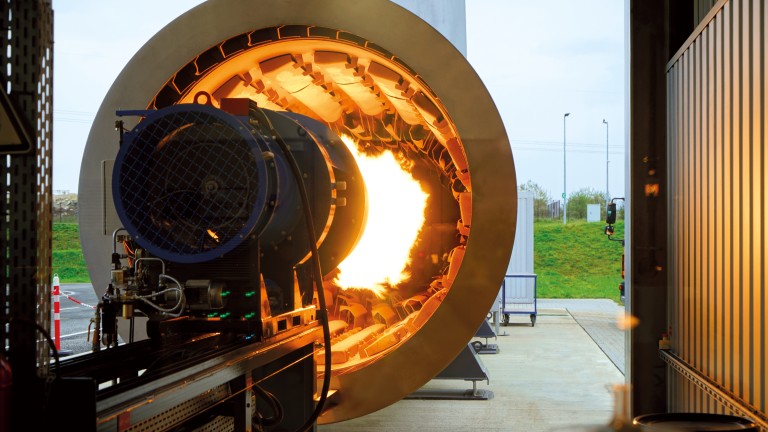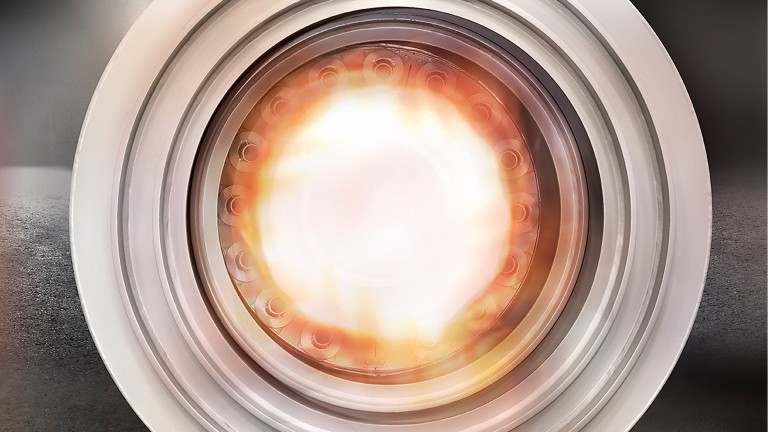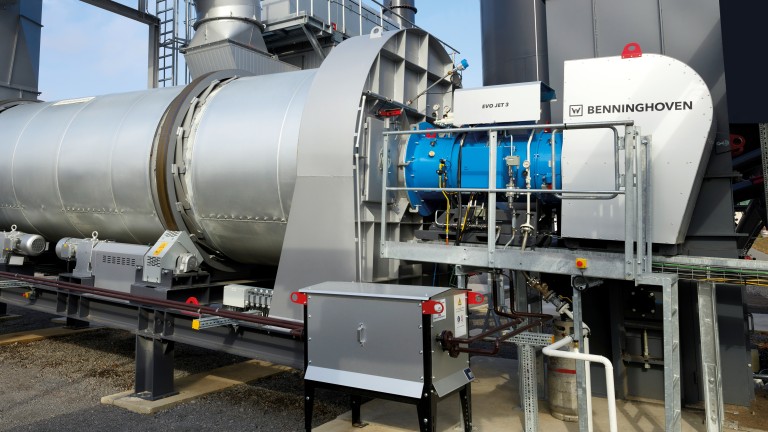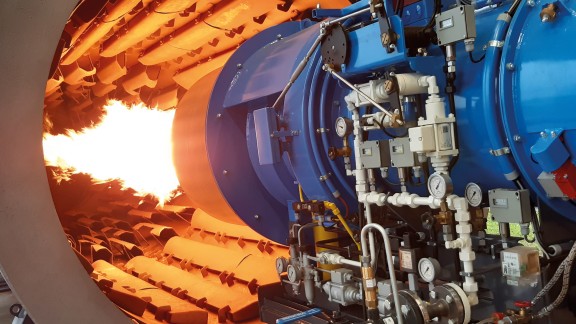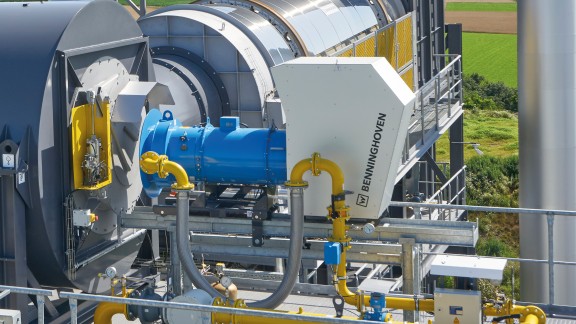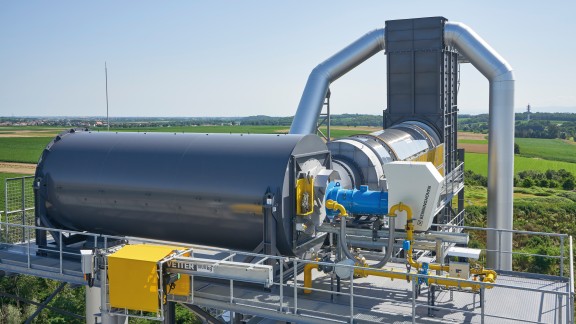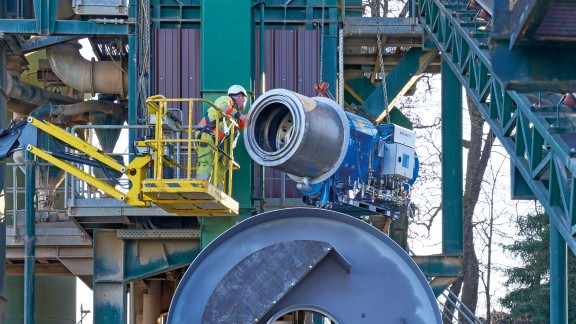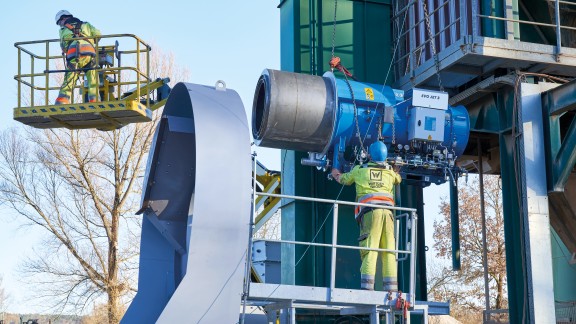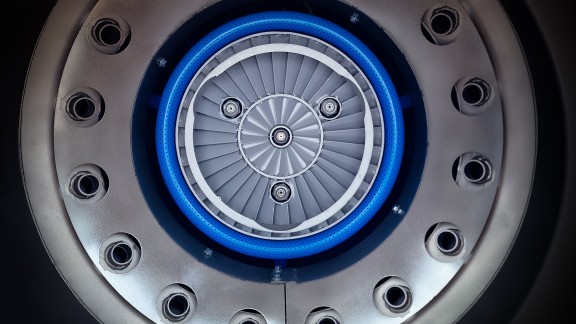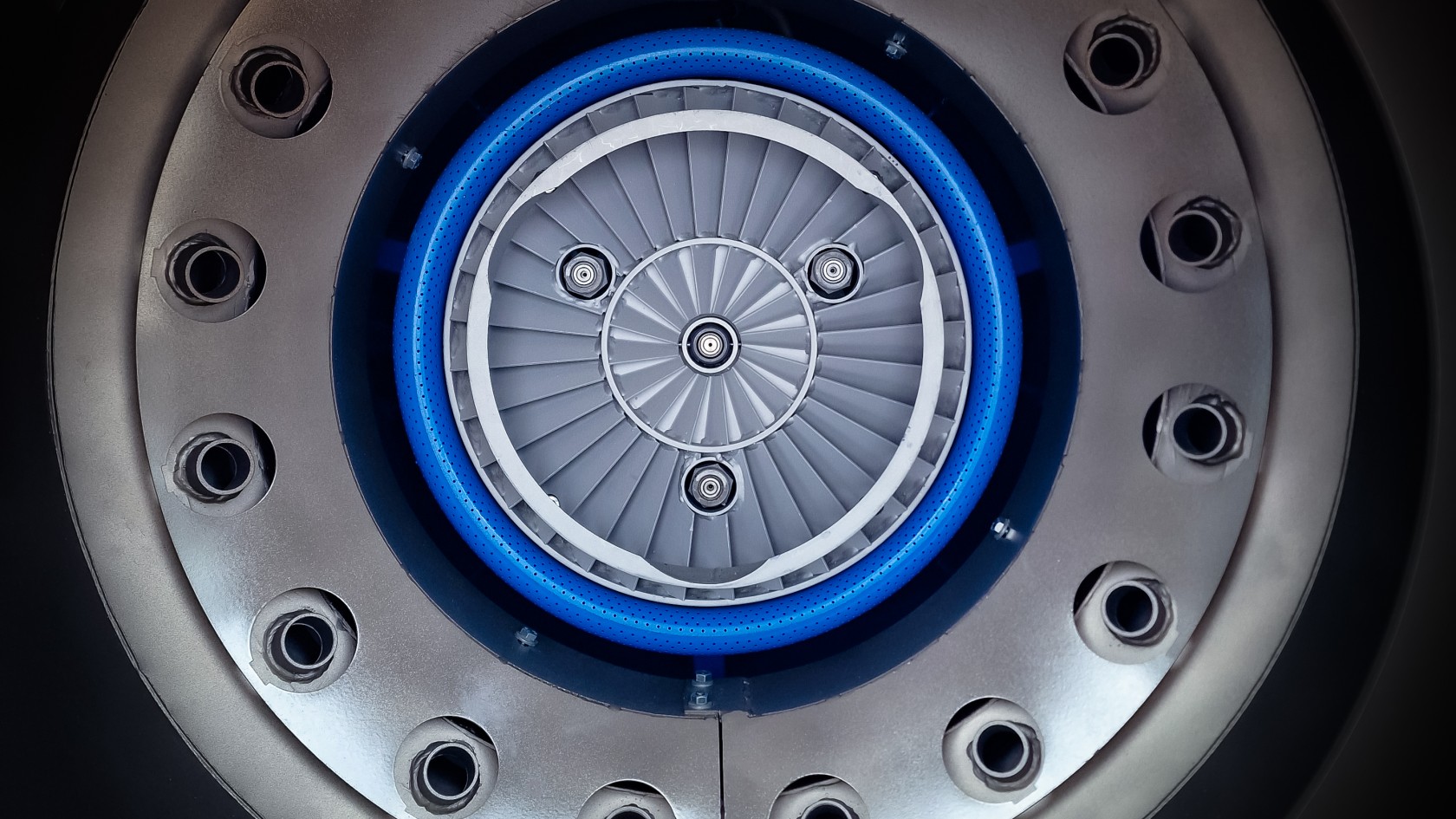

MULTI JET fuels
Efficiency and sustainability in energy production
A burner that in the standard model is designed as a single-fuel burner for drying and heating the base material can be expanded to use up to three fuels. This conversion turns the burner into a multi-fuel burner that allows for a number of different fuel variants. This means that oil, natural gas, liquid gas and common gaseous substances such as DME or hydrogen as well as solids such as coal dust, BtL and wood dust can be combined.
This flexibility offers a number of benefits. On the one hand, this eliminates plant downtime due to delivery problems or a lack of raw material. On the other hand, the cheapest fuel can always be selected in the event of price fluctuations for any particular fuel. In addition to this, the flexible use of alternative fuels enables CO₂-free drying. Overall, the burner with these add-ons provides an important contribution to the efficiency and sustainability in energy production.
CO₂-neutral instead of fossil fuels
All over the world, climate agreements and tougher regulations from state and local governments are also challenging the asphalt industry to reduce their output of greenhouse gases, like CO₂. Owners of asphalt mixing plants have to reduce emissions to help secure the future of the plant site. When it comes to mixing asphalt in a cleaner and more sustainable way, changing from oil or coal dust to gas is a major step: Natural gas or liquid gas already halve the CO₂ emissions.
The outcome for the renewable fuels wood dust and biomass to liquid (BtL) is even more better – These fuels are CO₂-neutral or, in the case of hydrogen, CO₂-free. The fuels of the future are also attractive when it comes to their availability, as fossil fuels are not only limited, but are becoming increasingly more difficult to produce. This makes it even more important for plant owners to have the right technologies for using alternative fuels and to therefore be ready for the future.
* Energy-intensive thermal drying and heating process of virgin mineral and recycled materials, CO₂-free thanks to green hydrogen
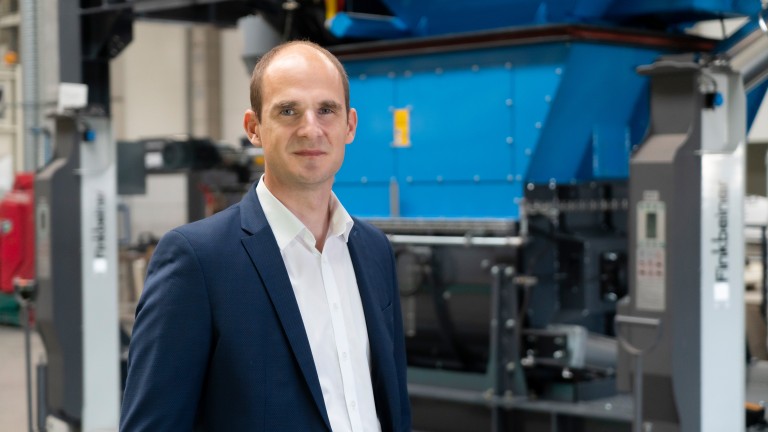
“We are always thinking ahead and developing solutions for tomorrow. Apart from enabling the use of future fuels such as wood dust, BtL and hydrogen, we also focus on direct energy savings.”
Steven Mac Nelly, Head of Development & Design Engineering at BENNINGHOVEN
Fuel: heating oil EL
Oil burner for light heating oil (heating oil EL)
Heating oil made from crude oil is divided into two types: light heating oil (heating oil EL) and heavy heating oil (heating oil S). The quality requirements for heating oil are defined in DIN 51603. Light heating oil can be burned in furnaces, central heating systems and industrial firing plants without preheating. Heavy heating oil, on the other hand, has to be preheated for transport and burning. The systems running on these fossil fuels, however, are increasingly subject to regulations and restrictions.
Fuel: gas
Liquid gas burner and natural gas burner
The BENNINGHOVEN gas burners can burn liquid gas already during the liquid phase, without first having to transform it into a gaseous state. This means that no additional periphery such as an evaporator is necessary and therefore no additional energy is required either.
Liquid gas burners and natural gas burners have the same mechanical structure. They differ only in their periphery, i.e. how the fuel is introduced into the burners.
Liquid gas, referred to as “associated gas”, is generated during the extraction of crude oil or natural gas. This associated gas used to be simply released into the atmosphere or burned in many cases. Today, more and more regions worldwide have banned this burning, which has an additional positive impact on the increasing availability of liquid gas.
Fuel: hydrogen
Hydrogen drying system from BENNINGHOVEN
GAME CHANGER – the burner generation that can also use 100 % green hydrogen
* Energy-intensive thermal drying and heating process of virgin mineral and recycled materials, CO₂-free thanks to green hydrogen
Learn moreFuel: wood dust
Still burning in the future
Wood is a renewable resource which can be produced sustainably and is therefore carbon-neutral when used as a fuel. With the MULTI JET wood dust burner, BENNINGHOVEN has made it possible to burn wood dust in asphalt mixing plants, adding another product to the portfolio of burner technologies developed in-house. The wood dust burner offers owners a sustainable option for modernising their existing mixing plants.
The development engineers at BENNINGHOVEN have identified the ideal particle size of the wood dust, which is produced mainly from scrap wood and wood waste. Identifying the optimum grading curve for the fuel is important for the flame geometry of the burner – and therefore for the effectiveness of heating the virgin mineral or the recycled asphalt (RAP). Several Benninghoven customers are already successfully using the MULTI JET wood dust burner.
The features the solid burner offer the advantage that coal dust as well as wood dust can be used as fuels.
When a new burner is purchased, it can be adapted to coal dust as well as to the future-proof wood dust material.
As there are already bottlenecks in the coal dust supply, though, wood dust as a carbon neutral fuel is becoming increasingly more attractive.
The complete periphery includes the burner and the dosing unit. The interface to the customer systems is the inlet to the dosing unit. The wood crusher and the wood silo are provided by the customer.
Burner
The wood dust is fed into the burner with precision dosing by means of the feed fan and the dosing unit. In the burner head, a separate auxiliary flame then ignites the material. The control range for wood dust with pilot flame is 1:6; the calorific value of wood dust is approx. 18 MJ/kg depending on the type of wood.
The secondary fuel, e.g. heating oil EL, liquid gas or natural gas, is used for the support flame.
The wood dust dosing system with storage tank has a capacity of 2.5 m³ and is installed at the discharge of the wood dust silo. In the tank, two agitators prevent the formation of bridges in the wood dust. A speed-controlled dosing screw releases the fuel in accordance with the required burner output and transports the wood dust into a blow-through rotary valve, which forms the interface to the conveying pipe. From there, the wood dust is blown into the head of the burner with a feeder fan and pipe.
Starting material on the asphalt mixing plant
The owner is obligated to ensure that the overall plant (for example the silo with the dosing system) is checked as part of a regular inspection as per the German industrial safety regulations (BetrSichV). Outside of Germany, the systems are subject to mandatory testing – the applicable national laws and directives must be observed.
Explosion protection (ATEX) especially for coal dust and wood dust
Fuel: BtL
Energy from biomass
The principle of producing biomass-to-liquid (BtL) fuels is based on liquefying biomass.
In the case of wood as a starting material, thermo-chemical conversion processes in a reactor use high temperature and high pressure to turn the cellulose-rich wood into pyrolysis oil.
The further processing steps are cleaning, synthesis and refining of the pyrolysis oil to produce BtL fuels.
Another significant development in the energy market is the use of liquefied biomass (BtL). BtL can be produced from plant waste such as straw, wood or energy crops like maize and oilseed rape. BENNINGHOVEN now also offers an innovative
solution for the use of BtL as a fuel: the MULTI JET BtL burner. Like wood dust, BtL is also considered carbon-neutral. And like all MULTI-JET burners, BENNINGHOVEN BtL burners can also be run with other fuels such as oil, coal dust and gas. The new BENNINGHOVEN burners therefore offer plant operators a future-proof investment option: continuing to use fossil fuels in the short term while being ready to switch to renewable fuels quickly.
For wood or wood waste as a starting product, the challenge lies in the processing of the natural material that can vary greatly in its chemical composition. These fluctuations affect the final BtL product. Smaller fluctuations can be compensated by adapting the preheating temperature. Larger fluctuations or fuel changes, however, require adjustments on site.
Customers therefore send their heating medium to Wittlich in a stainless steel container so the correct basic parameters for the burner can be determined at the BENNINGHOVENBENNINGHOVEN factory for new fuels. There, the fuel is tested extensively and the optimum burner settings are identified.
Fuel: coal dust
Coal dust burner (brown coal or hard coal)
The BENNINGHOVEN MULTI JET burner, which is designed as an oil burner in standard models, can be expanded to utilise up to three other fuels. This turns the burner into a combination burner, which means that other types of fuel such as oil, natural gas, liquid gas, heavy oil, BtL fuels (liquefied biomass) and coal dust are all available as fuels. The lignite dust is fed into the feed pipe with the help of the coal dust dosing system (flange-mounted onto the outlet valve of the coal dust silo) and blown into the head of the burner by a conveyor fan.
This well-designed coal dust dosing system offers plant owners a number of key benefits:
Working more efficiently with sustainable and economical technologies is the challenge of today and tomorrow. Benninghoven offers a variety of innovative solutions for increasing sustainability in asphalt production.
Learn moreAsphalt production, recycling systems, combustion technology, control systems and bitumen technology – with BENNINGHOVEN technologies, every customer can find the right solution for their location, according to the specific requirements and conditions.
To the technologies